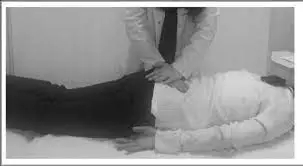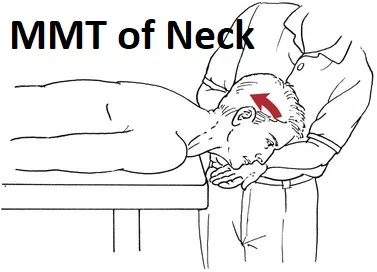Sacral Apex Pressure Test
The sacral apex pressure test is also known as the sacral thrust test
Sacral compression test
Downwards pressure test
Sacral spring test
Prone springing test
This sacral apex pressure test is a pain stimulation test this test is used to analyze sacroiliac dysfunction.
A positive test of single does not have high diagnostic accurateness but in a variety with the other sacroiliac pain which is stimulation tests that provide valid proof for the sacroiliac joint (SI joint) dysfunction.
Table of Contents
What is the importance of the Sacral apex pressure test?
This Sacral apex pressure test is used to investigate the problem in the sacroiliac joint (SI joint).
How is the sacral apex pressure test performed?

The position is in a prone position.
The examiner inserts the base of his or her palm at the apex of the patient’s sacrum as the patient is lying prone on a firm surface.
Pressure is then used to the apex of the sacrum on the ilium.
What was the conclusion of the sacral apex pressure test?
Sacral apex pressure test
This test may indicate sacroiliac joint pain if the pain is produced over the joint.
The sacroiliac joints move in a rotating motion as a result of the test.
Evidence of the Sacral apex pressure test:
Assessing sacroiliac pain invitation testing during the intra-articular injection of local anesthetic in the SI joint is the gold standard of the sacral apex pressure test. = sacroiliac joint, under the direction of radiological imaging.
A specified level of pain decrease of 70-90% must be achieved.
There are some issues are available that associated with the benefit of this gold standard of this test:
This test only examined the intra-articular pain sources
Not all structures but the capsule of the SI joint are affected
The test must be used with a needle which is maybe produced & raise the pain
Most pain provocation tests for the sacroiliac region exist & they have been subject to clinical study.
Recommendation of Grade A which is founded on the 3 levels of the 1B studies recognizes the 4 to 5 tests with the most elevated specificity & sensitivity among known sacroiliac pain provocation tests & adequate intertester reliability is also contained in the clinical examination:
Laslett et al
Who is described to study in 2005
In this state, there is no other examination for wishful thinking if both distraction and the thigh thrust test provoke familiar pain.
If only one or more tests are positive, further testing is instructed to get a valid result.
Values for diagnostic utility are found here
Intertester reliability for the sacral apex pressure test is 74 [moderate] kappa = 0,52 & p<0,001..
Sensitivity of the Sacral apex pressure test = 63%
The specificity of the sacral apex pressure test = 75%.
The positive predictive value of the Sacral apex pressure test is= 56%
The negative predictive value of the Sacral apex pressure test is = 80%.
FAQ
A pain-provocation test called the sacral thrust test is used to identify sacroiliac dysfunction. While a single positive test is not capable of providing a high degree of diagnostic accuracy, it does provide reliable proof of sacroiliac dysfunction when combined with other sacroiliac pain provocation tests. The sacral compression test is another name for the procedure.
In conclusion, the pelvic compression test can help differentiate between MP and lumbosacral radicular pain by being sensitive and specific for MP. The majority of people with this illness respond well to conservative treatment, and those who need surgery can benefit from nerve decompression.







